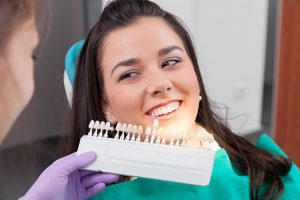 Well before my pursuit of dentistry as a career, my first exposure to the potential of cosmetic dentistry were reality TV shows such as ABC’s “Extreme Makeover” (2002-2007) and FOX’s “The Swan” (2004). Both of these TV shows depicted ordinary people who underwent radical physical transformations via plastic surgery, cosmetic dentistry, weight loss regimens, hairdressing, and wardrobing. The transformations were consistently dramatic and often life changing for the participants due to the improved self-esteem which resulted from these “extreme makeovers”. Despite this fact, both TV shows were mired in controversy due to accusations of creating unrealistic body image goals among both men and women. Nonetheless, even a casual observer of the show could not deny the tremendous impact of the “smile makeover” component of these transformations.
Well before my pursuit of dentistry as a career, my first exposure to the potential of cosmetic dentistry were reality TV shows such as ABC’s “Extreme Makeover” (2002-2007) and FOX’s “The Swan” (2004). Both of these TV shows depicted ordinary people who underwent radical physical transformations via plastic surgery, cosmetic dentistry, weight loss regimens, hairdressing, and wardrobing. The transformations were consistently dramatic and often life changing for the participants due to the improved self-esteem which resulted from these “extreme makeovers”. Despite this fact, both TV shows were mired in controversy due to accusations of creating unrealistic body image goals among both men and women. Nonetheless, even a casual observer of the show could not deny the tremendous impact of the “smile makeover” component of these transformations.
If we now fast forward a decade later to present day, the trend in dentistry is for more conservative cosmetic dentistry rather than “extreme makeovers”. In fact, the term “minimally invasive” has become a popular phrase in the dental industry to indicate treatment that strives to preserve healthy tooth structure. Although there are certainly instances of severe tooth wear or extensive tooth decay that require full-mouth rehabilitation, many patients nowadays are pursuing more conservative treatment options with their dentists.
Regardless of the specific treatment that a patient pursues, there is virtually unanimous agreement of the importance of the “smile”. In a landmark study conducted in 2004 on behalf of the American Academy of Cosmetic Dentistry (AACD), 99.7% of Americans believed that a smile is an important social asset. In addition, 96% of adults think that an attractive smile makes a person more appealing to members of the opposite sex. Conversely, 74% of adults feel an unattractive smile can hurt a person’s likelihood of career success.
For patients who value their smile yet desire a conservative or minimally invasive approach to their dental care, treatments such as teeth whitening, Invisalign, bonding, and/or porcelain veneers can be considered.
Teeth whitening, also known as “bleaching”, involves the use of peroxide gel in clear custom trays worn nightly for about 2 weeks to gradually whiten the teeth. Because whitening is usually performed on all of the upper and lower front teeth, a significantly brighter smile can be achieved with minimal cost to the patient.
Invisalign, also known as “invisible braces”, “clear braces” or “clear aligner therapy”, is a popular type of orthodontic treatment used to straighten teeth in teenagers and adults. Because Invisalign avoids the need for metal brackets and wires, tooth movement can be accomplished unobtrusively and without any social stigma.
Bonding, also known as “direct bonding” or “composite resin bonding” is the addition of tooth-colored filling material to restore teeth that are chipped, worn, eroded, or abraded. This treatment is usually accomplished in a single visit and is useful for correction of minor cosmetic defects.
Veneers, also known as “laminates” are thin porcelain facings that are bonded onto the front of the teeth to correct color, size, and/or shape discrepancies. Whether veneers can be completed with “no preparation” or “minimal preparation” is dependent on the condition of the teeth as well as the goals of treatment.






